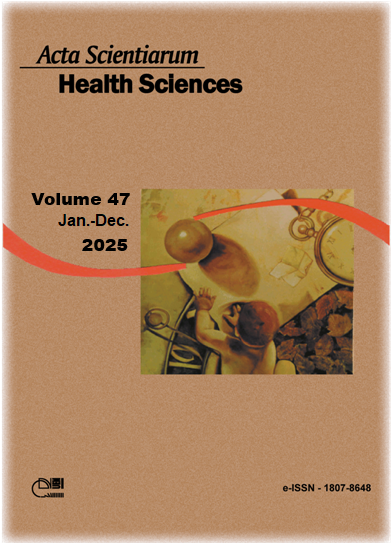Fractal analysis of bone trabeculae from the mandible of patients with chronic kidney disease
Resumo
The aim of this study was to investigate the characteristics of the bone trabeculae pattern in the mandible of patients with chronic kidney disease (CKD) using fractal dimension analysis in cone beam computed tomography (CBCT) exams. The sample comprised 20 adult patients, divided into two groups: a group of 10 individuals with CKD and a control group of 10 people matched for sex and age similar to the first group. The software ImageJ was used to do fractal analysis on the mandibular condyle and body of each individual. Statistical analysis included the use of the intraclass correlation coefficient (ICC) for the examiner’s standardization and the student t-test for fractal analysis. The results showed a lower complexity of bone microarchitecture in the CKD group compared to the healthy patients. The fractal values found in the mandible of individuals were significantly lower for both body and condyle in the CKD group. The decrease in bone quality interferes directly in the planning of clinical and surgical interventions, therefore, fractal analysis appears to be a potential, simple, and economic method for examining bone quality through imaging exams.
Downloads
Copyright (c) 2025 Acta Scientiarum. Health Sciences

This work is licensed under a Creative Commons Attribution 4.0 International License.
DECLARAÇÃO DE ORIGINALIDADE E DIREITOS AUTORAIS
Declaro que o presente artigo é original, não tendo sido submetido à publicação em qualquer outro periódico nacional ou internacional, quer seja em parte ou em sua totalidade.
Os direitos autorais pertencem exclusivamente aos autores. Os direitos de licenciamento utilizados pelo periódico é a licença Creative Commons Attribution 4.0 (CC BY 4.0): são permitidos o acompartilhamento (cópia e distribuição do material em qualqer meio ou formato) e adaptação (remix, transformação e criação de material a partir do conteúdo assim licenciado para quaisquer fins, inclusive comerciais.
Recomenda-se a leitura desse link para maiores informações sobre o tema: fornecimento de créditos e referências de forma correta, entre outros detalhes cruciais para uso adequado do material licenciado.























5.png)







